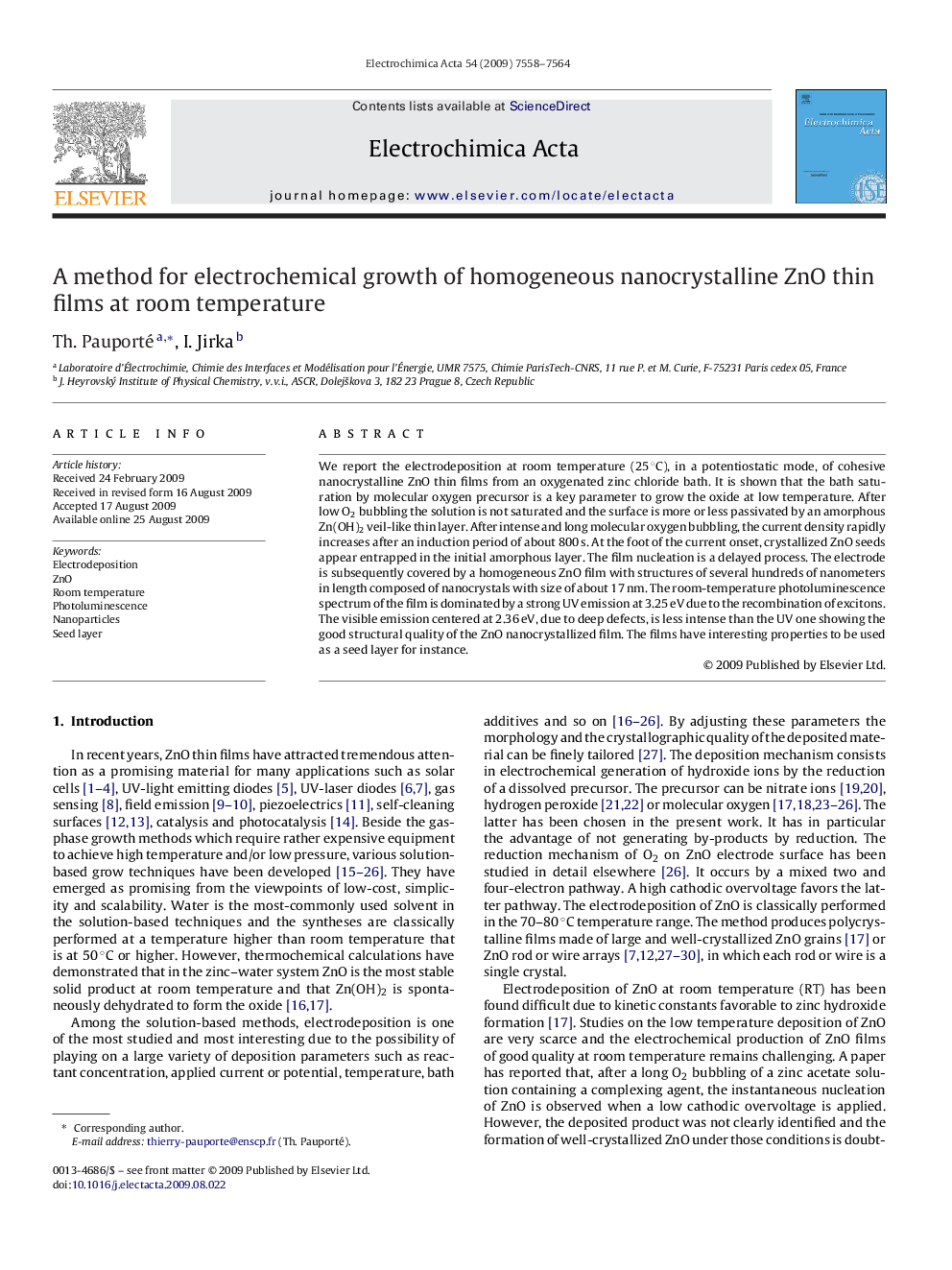| Article ID | Journal | Published Year | Pages | File Type |
|---|---|---|---|---|
| 191966 | Electrochimica Acta | 2009 | 7 Pages |
We report the electrodeposition at room temperature (25 °C), in a potentiostatic mode, of cohesive nanocrystalline ZnO thin films from an oxygenated zinc chloride bath. It is shown that the bath saturation by molecular oxygen precursor is a key parameter to grow the oxide at low temperature. After low O2 bubbling the solution is not saturated and the surface is more or less passivated by an amorphous Zn(OH)2 veil-like thin layer. After intense and long molecular oxygen bubbling, the current density rapidly increases after an induction period of about 800 s. At the foot of the current onset, crystallized ZnO seeds appear entrapped in the initial amorphous layer. The film nucleation is a delayed process. The electrode is subsequently covered by a homogeneous ZnO film with structures of several hundreds of nanometers in length composed of nanocrystals with size of about 17 nm. The room-temperature photoluminescence spectrum of the film is dominated by a strong UV emission at 3.25 eV due to the recombination of excitons. The visible emission centered at 2.36 eV, due to deep defects, is less intense than the UV one showing the good structural quality of the ZnO nanocrystallized film. The films have interesting properties to be used as a seed layer for instance.
